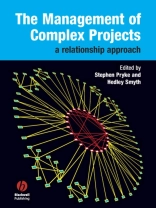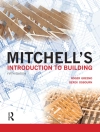Value is added to projects through the relationships surrounding
the client; the focus of this book is therefore the client as
project, rather than the building on the ground. It shows how to
create and maintain effective relationships between the client and
the project team, as well as intra-coalition relationships
Students, academics and practitioners need to understand the
changing nature of reforms from successive calls for change by the
industry’s various clients and client groups. Project team
network relationships are a function of mindsets, behaviour and
competencies of individuals and The Management of Complex Projects:
a relationship approach:
* Explores the relationship at the project interface:
client-design team-contractor, stakeholders and supply chain
relations
* Examines different concepts to the development and
management of relationships; formation and maintenance issues
* Highlights some of the key issues that require development,
both academically and through applied research.
Most project management books cover tools and techniques; this one
covers the softer skills and shows how crucial good relationships
are to the successful management of projects.
قائمة المحتويات
Introduction: Overview of book.
Chapter 1: Scoping the subject in theory and practice.
Section I: Mindsets, behaviour and competencies in project
relations.
Chapter 2: Risk and opportunity management in a changing world –
a relationship-based approach.
Chapter 3: Applying emotional intelligence in project
working.
Chapter 4: Project-based learning: how social relations create
knowledge.
Section II: Relations at the client, design team, contractor
interface.
Chapter 5: Relationship management; theories and tools.
Chapter 6: Account handling models for continuity of
service.
Chapter 7: Applying team-working models to projects.
Chapter 8: Measuring, developing and managing trust in the
relationship.
Section III: Relations across the project clusters and supply
chain.
Chapter 9: Projects as networks and the application of social
network analysis as a diagnostic tool.
Chapter 10: Relations in the supply chain; distance, decay and
redress.
Chapter 11: Communications and stakeholders.
Chapter 12: Economics of relationships; managing opportunities
and constraints.
Conclusion: Setting an agenda for academia and industry for the
future
عن المؤلف
Stephen Pryke, Course Director; Hedley Smyth, Senior Lecturer – both teach on Masters Programmes (Project & Enterprise Management, Construction Economics & Management) at the Bartlett School, University College London












